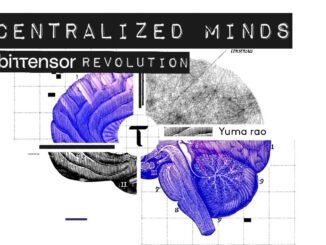
The idea of subnet collaboration, different AI systems linking together to form one complete product, isn’t just a distant dream on Bittensor.
It’s happening now. And soon, it might redefine how decentralized AI training operates across the open web.
Let’s dig into how One Covenant, a collective of three subnets—Templar, Basilica, and Grail—is quietly building a full end-to-end decentralized training stack on Bittensor.
The Thesis: Building a Unified Training Pipeline
One Covenant’s architecture is simple yet bold:
- Templar (Subnet 3) handles collaborative pre-training
- Basilica (Subnet 39) provides verifiable GPU compute
- Grail (Subnet 81) focuses on post-training and cryptographically verifiable inference
Together, they form an integrated pipeline: Pre-train → Compute → Verify.
All three subnets are open-source and actively maintained under the One Covenant GitHub organization.
Recent commits (as of November 6, 2025) show strong engineering momentum, with frequent updates, releases, and new research contributions across all three codebases.
Why This Matters
Bittensor recently shifted to a flow-based emission model (“TaoFlow”), where rewards now depend on sustained net inflows of TAO rather than short-term token prices.
In practical terms:
- Subnets that attract long-term liquidity and real usage win.
- Those that rely on hype or price momentum lose traction fast.
This shift makes collaboration and utility more valuable than ever. No single subnet can dominate on hype alone—teams must now produce real products and measurable value to maintain emissions.
Investor Takeaways
On fundamentals and technology, One Covenant stands out with:
- Distributed training research
- Cryptographic verification across the stack
- Open-source transparency and speed
Economically, TaoFlow raises both the stakes and the rewards. It favors sustainable innovation but introduces higher execution risk.
For investors and validators, this makes One Covenant a high-potential, high-variance bet—appropriate for staged, risk-aware capital.
Deep Dive: The Three Subnets of One Covenant
1. Templar (Subnet 3) — Decentralized LLM Pre-Training
Templar is the foundation of the stack. It coordinates miners (trainers) and validators to pre-train large language models collaboratively across the internet.
- Miners submit compressed gradients and model updates.
- Validators score contributions and adjust weights on-chain.
Templar’s standout innovation is communication-efficient training, achieved through algorithms like SparseLoCo and CCLoCo, which use top-k sparsification and 2-bit quantization to minimize bandwidth without sacrificing accuracy.
Repo Snapshot: ~2k commits, 75 stars, 42 forks. The documentation outlines workflows for gradient compression (DCT), data windowing, and miner incentives.
2. Basilica (Subnet 39) — Verifiable GPU Compute Marketplace
Basilica builds the backbone of compute for decentralized AI.
It’s a Rust-based, permissionless GPU marketplace where miners offer compute power verified through cryptographic proofs and remote validation.
This ensures that every GPU contributing to the network can be independently attested—solving one of decentralized compute’s toughest trust problems.
Key differentiators include:
- Hardware verification using P-256 proofs
- SSH-based remote checks for live workloads
- An HTTP API gateway for seamless integration with other subnets
Repo Snapshot: 1.3k commits, 31 stars, 6 forks. Packages for validators, miners, and executors are actively maintained.
3. Grail (Subnet 81) — Post-Training and Verifiable Inference
Grail introduces cryptographically verifiable inference through the GRAIL protocol (Guaranteed Rollout Authenticity via Inference Ledger).
It ensures every output can be traced back to a specific model, input, and environment—proving authenticity in a trustless setting. Current functionality covers inference, with reinforcement learning (RL) loops planned next.
Architecture highlights:
- PRF-based token checks
- Randomness from drand
- Validator-side verification
- Integration with environment benchmarks (e.g., GSM8K, SAT)
Repo Snapshot: ~600 commits, 6 stars, 6 forks, updated November 2025.
The Synergy: A Full-Stack Decentralized Training Pipeline
Few projects in decentralized AI have managed to connect all three pillars—training, compute, and inference—into one coherent pipeline.
That’s what makes One Covenant different.
- Templar — trains models collaboratively
- Basilica — provides verified compute to scale the process
- Grail — verifies and authenticates the outputs
This vertical integration gives Bittensor a rare edge: verifiable, composable, and market-ready decentralized training infrastructure.
🔬 Technology Highlights
1. Communication Efficiency (Templar)
Top-k sparsification and DCT compression reduce bandwidth load while preserving convergence quality, making global-scale model training feasible on decentralized networks.
2. Verifiable Compute (Basilica)
Cryptographic attestation and remote validation make compute contributions auditable, preventing fraudulent claims and enabling fair reward distribution.
3. Authentic Rollouts (Grail)
By cryptographically tying outputs to models and tasks, Grail closes the final trust gap for post-training—critical for RL and enterprise applications.
Strengths and Competitive Edge
- Research-driven foundation: Academic-grade distributed training experiments and published algorithmic improvements.
- Verifiability across layers: From compute to inference, every contribution can be checked and trusted.
- Open-source momentum: Active repos, continuous commits, and transparent updates.
- Vertical integration: A unified training–compute–inference stack, all within Bittensor.
The Road Ahead
Decentralized AI training will rise or fall based on verifiability and economic sustainability.
One Covenant aims squarely at both.
The next milestones:
- Completing Grail’s RL loop
- Productizing Basilica for enterprise GPU workloads
- Publishing competitive open checkpoints
- Sustaining net TAO inflows under TaoFlow
If those dominoes fall in sequence, One Covenant could become the reference architecture for decentralized AI training—bridging research-grade systems and market-ready compute.
Final Thoughts
The future of decentralized AI won’t belong to isolated subnets—it will belong to networks that collaborate.
One Covenant’s integrated design—Templar, Basilica, and Grail—represents that future:
open, verifiable, and economically aligned.
With TaoFlow reshaping incentives, collaboration isn’t just good philosophy anymore.
It’s good economics.




Be the first to comment